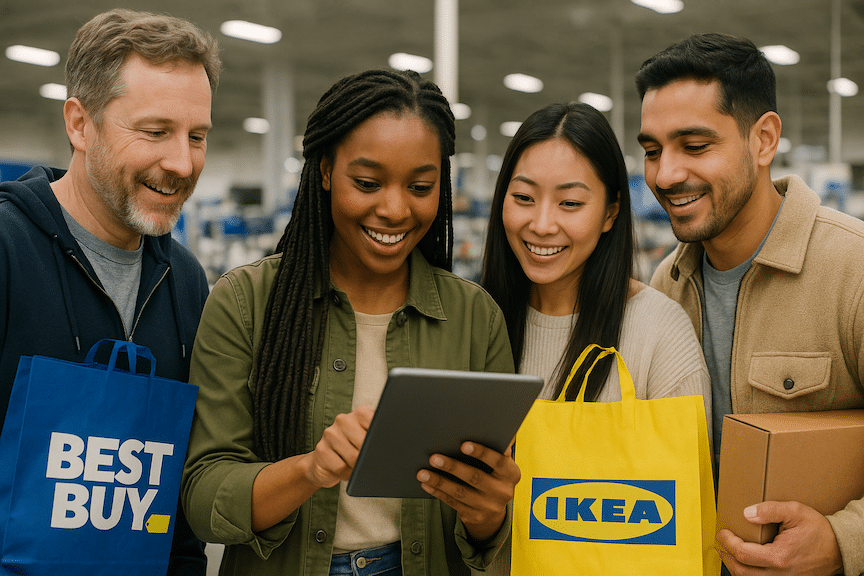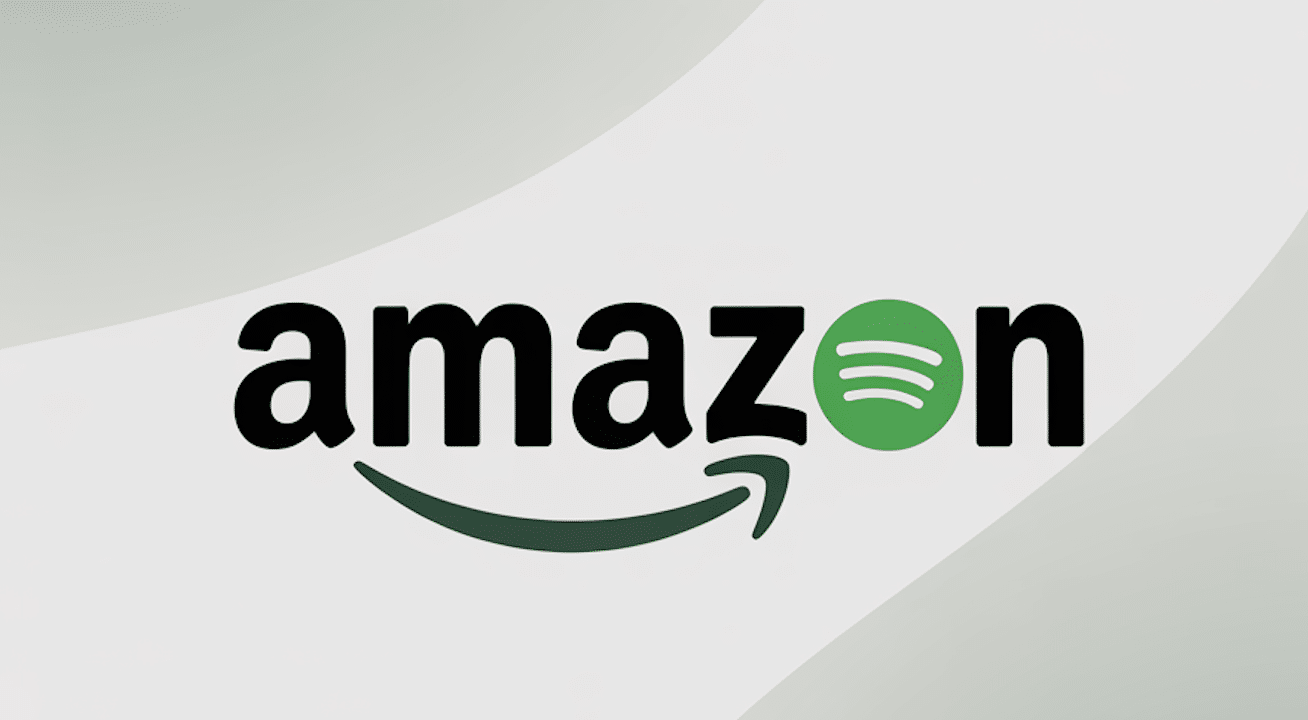Inside Best Buy’s New Marketplace : The New 500 Seller Experiment Everyone’s Watching
Best Buy’s curated marketplace and IKEA partnership show some retailers are choosing quality over quantity in the platform economy

Best Buy’s marketplace August 2025 launch with 500 carefully selected sellers adds another chapter to an ongoing experiment in retail: whether the marketplace model Amazon pioneered will become the standard across the industry. This transformation is testing traditional assumptions about retail, from vendor relationships to technology infrastructure.
The Strategic Shift: Multiple Paths Emerge
The marketplace trend reveals distinctly different strategic approaches across retail. Best Buy faced three consecutive years of declining sales, with revenue plateauing at $41.5 billion before yesterday’s marketplace launch.
But Best Buy’s strategy extends beyond just adding third-party sellers—they’re also pioneering new retail partnerships. Starting fall 2025, Best Buy will pilot in-store planning experiences with IKEA in select Florida and Texas locations, marking the first time IKEA products and services will be accessible through another U.S. retailer. This hybrid approach combines marketplace expansion with strategic physical retail partnerships.
Meanwhile, Target has taken a notably different approach—their Target Plus marketplace remained invite-only with only 450 sellers and 250,000 products as of early 2022, adding approximately a dozen sellers monthly according to Marketplace Pulse research.
This contrast illustrates the divergent strategies in retail. While Walmart’s marketplace has expanded to include hundreds of millions of products beyond their in-store selection, Target deliberately maintains a small, curated approach. Target’s digital sales grew from $6.8 billion in 2019 to nearly $20 billion in 2021, but most growth came from store-powered fulfillment rather than marketplace expansion.
Traditional retail remains capital-intensive and risky, requiring demand prediction, inventory investment, and markdown absorption. The marketplace model shifts these risks to third-party sellers while retailers collect commission fees—industry sources suggest these typically range from 8% to 15% depending on category. Yet Target’s measured approach and the absence of marketplaces at retailers like Costco and Home Depot suggest this model may not be universal.
The New Playbook: Divergent Strategies
Examining various retailers today reveals there’s no single playbook:
The Aggressive Expansion Model (Amazon, Walmart) – These retailers rapidly scale their marketplaces, adding thousands of sellers and millions of products. They prioritize vast selection and competitive dynamics. Amazon hosts over 9.7 million sellers globally, while Walmart has grown its marketplace substantially since its 2009 launch.
The Curated Approach (Target, Best Buy) – These retailers maintain strict quality controls. Target’s limited seller base shares approximately 200 million monthly visits to Target.com—creating minimal competition compared to other marketplaces.
Best Buy’s decision to launch with only 500 sellers suggests a similar philosophy of quality over quantity. Their IKEA partnership further demonstrates a preference for strategic curation over unlimited expansion—customers will be able to combine Best Buy’s major appliances with IKEA’s home furnishings for kitchen and laundry room design, creating value through careful partnership rather than marketplace scale.
The Hybrid Evolution (Kroger, Macy’s, Nordstrom) – Traditional retailers are testing marketplaces while maintaining their core retail model. Kroger launched its marketplace in 2020, while Nordstrom added theirs in 2022, treating these as complementary channels rather than complete transformations.
The Traditional Holdouts – Notable retailers including Costco, Home Depot, and Trader Joe’s continue operating successfully without marketplaces, demonstrating that the model isn’t mandatory for retail success.
Ready to Grow Your Walmart Business?
Canopy’s Partners Achieve an Average 84% Profit Increase!
Let's talkThe Seller’s Dilemma: Navigating Complexity
For brands operating today, this evolving landscape creates both opportunities and mounting operational challenges. The opportunity varies significantly by platform—access to Amazon’s massive customer base, Walmart’s omnichannel shoppers, or Target’s curated, less competitive environment where sellers face minimal competition.
Best Buy’s marketplace adds another dimension: sellers targeting tech-adjacent products now have access to customers already shopping for major appliances and, soon, planning entire room renovations.
The operational reality involves managing increasingly complex requirements:
- Inventory synchronization across platforms with different velocity rates and seasonal patterns
- Platform-specific content requirements (technical specifications for Best Buy, lifestyle imagery for Target, value messaging for Walmart)
- Varied fulfillment standards ranging from same-day delivery expectations to 5-7 day windows
- Different fee structures with marketplace commissions varying widely by category and platform
- Unique advertising ecosystems each requiring specialized knowledge and separate budget allocation
- Distinct performance metrics that determine product visibility and Buy Box eligibility
The complexity compounds exponentially. A brand selling on five marketplaces essentially operates five different businesses, each with unique requirements, customer expectations, and success metrics. This has led to the emergence of specialized agencies and software platforms designed to manage multi-marketplace operations.
Changing Vendor Relationships
The marketplace model represents a fundamental shift in brand-retailer dynamics. Traditional vendor relationships established in the 20th century involved annual negotiations, guaranteed shelf space, and collaborative planning cycles. Today’s marketplace relationships are algorithmic, real-time, and performance-based.
Best Buy’s IKEA partnership suggests some retailers are finding middle ground—combining marketplace dynamics with traditional strategic partnerships. This hybrid model allows retailers to offer expanded selection while maintaining quality control through carefully chosen collaborations.
This transformation has several implications for brands:
- Small brands can compete directly with Fortune 500 companies if they excel at marketplace fundamentals
- Performance metrics like 48-hour shipping rates and 4.5+ star ratings determine success more than golf course relationships
- Pricing updates happen hourly rather than annually, requiring dynamic pricing strategies
- Brands gain direct access to customer data but lose the predictability of traditional purchase orders
Major consumer goods companies have responded by creating dedicated e-commerce divisions. Companies like Procter & Gamble and Unilever now employ teams of marketplace specialists separate from traditional retail account managers, focusing on skills like content optimization, performance marketing, and data analytics.
Ready to Start Growing Your Amazon Brand?
Canopy’s Partners Achieve an Average 84% Profit Increase!
Find out moreThe Technology Investment Race
Retailers pursuing marketplace strategies face escalating technology requirements:
Advanced Search Infrastructure – Modern marketplaces require sophisticated algorithms to help customers find relevant products among millions of options. Walmart’s search technology investments include AI-powered visual search and natural language processing to compete with Amazon’s refined search capabilities.
Comprehensive Seller Platforms – Retailers must provide powerful tools for inventory management, order routing, performance analytics, and payment processing. Best Buy partnered with established marketplace technology providers rather than building from scratch, a common approach for newer entrants.
Retail Media Networks – Walmart Connect generated approximately $4.4 billion in global advertising revenue in 2024, marking a 27% year-over-year increase, while Target’s Roundel and Kroger Precision Marketing have become significant profit centers. These advertising platforms require sophisticated attribution modeling and audience targeting capabilities.
Fulfillment Infrastructure – Walmart Fulfillment Services, launched in 2020, now competes directly with Amazon’s FBA. Target’s sortation centers and Shopify Fulfillment Network represent massive capital investments in logistics infrastructure.
Industry analysts estimate major retailers are collectively investing tens of billions annually in digital transformation, though specific marketplace allocations vary widely.
Observations on Retail’s Evolution
As we observe retail’s evolution in 2025, several patterns emerge:
Selective Adoption Prevails – Rather than universal marketplace adoption, retailers are choosing strategies aligned with their brand positioning. Luxury retailers like Saks Fifth Avenue maintain highly curated approaches, while mass merchants pursue scale. Best Buy’s dual strategy—limited marketplace sellers combined with strategic partnerships like IKEA—represents yet another model.
Specialization Increases Value – Successful marketplaces are developing distinct identities. Etsy dominates handmade goods, StockX owns sneaker resale, and Best Buy targets tech-adjacent products while now expanding into integrated home solutions. This specialization helps sellers identify the most suitable platforms for their products.
Operational Excellence Becomes Mandatory – Early marketplace sellers could succeed with basic operations. Today, professional product photography, same-day shipping capabilities, and 24/7 customer service are table stakes for serious sellers.
Geographic Variations Persist – European marketplaces like Otto and Zalando operate differently than U.S. platforms, emphasizing sustainability and data privacy. Asian marketplaces including Rakuten and Coupang integrate social features uncommon in Western platforms. These regional differences require localized strategies for global brands.
Technology Democratization Accelerates – Platforms like Mirakl, CommerceHub, and Marketplacer now power marketplaces for dozens of retailers, reducing technical barriers to entry. This democratization may accelerate marketplace adoption among regional and specialty retailers.
For e-commerce brands navigating this landscape, success requires strategic flexibility rather than rigid assumptions. The evidence suggests retail’s future includes multiple models coexisting—from traditional wholesale relationships to highly curated marketplaces to open platforms hosting millions of sellers.
The Amazonification of retail may ultimately be less about universal adoption of one approach and more about retailers discovering which model best serves their customers and capabilities. For sellers, success means understanding these nuanced differences and crafting strategies that leverage each platform’s unique characteristics while maintaining operational excellence across all channels.
Canopy Management is a full-service marketing agency for Amazon, Walmart, and TikTok sellers. Our team consists of multi-million dollar, omni-channel entrepreneurs, industry leaders, and award-winning experts.
Ready to Start Growing Your Amazon Brand?
Canopy’s Partners Achieve an Average 84% Profit Increase!
Find out more

